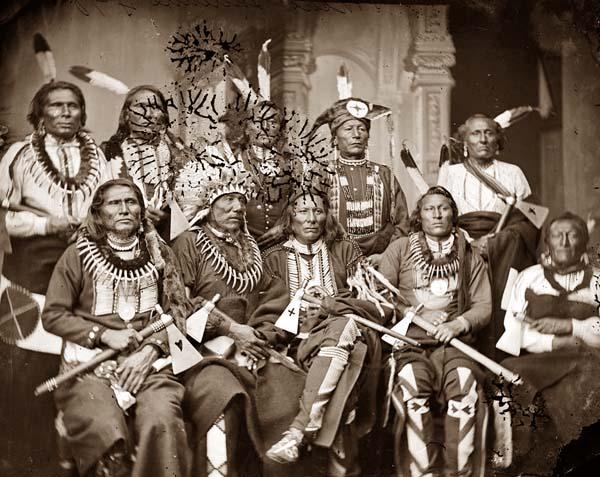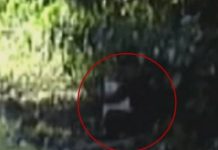
Christopher Columbus did not discover America.
Although nothing can be taken away from Columbus’ daring voyage, he certainly was not the first to arrive on the shores of the Americas. For one thing, there were already people here – many Native American nations inhabited what later became known as North and South America and even the Caribbean islands where Columbus landed. Columbus probably wasn’t even the first “white man” to make it here. It’s fairly well documented that Icelander Leif Ericsson successfully sailed to North America in the year 1000 – almost 500 years prior to Columbus’s voyage.
In fact, there’s a growing amount of evidence suggesting that a lot of the familiar history of human exploration and “discovery” by our ancestors as we were taught it may be quite wrong. There is hard evidence of ancient civilizations making their mark in places where, according to traditionally accepted history, they just shouldn’t be.
Here’s an overview of some of the most remarkable and fascinating cases
Coins:
- Roman coins have been found in Venezuela and Maine.
- Roman coins were found in Texas at the bottom of an Indian mound at Round Rock. The mound is dated at approximately 800 AD.
- In 1957 near Phenix City, Alabama, a small boy found a coin in a field from Syracuse on the island of Sicily, and dating from 490 B.C.
- In the town of Heavener, Oklahoma, another out-of-place coin was found in 1976. Experts identified it as a bronze tetradrachm originally struck in Antioch, Syria in 63 A.D. and bearing the profile of the emperor Nero.
- In 1882, a farmer in Cass County, Illinois picked up a bronze coin later identified as a coin of Antiochus IV, one of the kings of Syria who reigned from 175 B.C. to 164 B.C., and who is mentioned in the Bible.
Pottery:
- Roman pottery was unearthed in Mexico that, according to its style, has been dated to the second century A.D.
Inscriptions:
- In 1966, a man named Manfred Metcalf stumbled upon a stone in the state of Georgia that bears an inscription that is very similar to ancient writing from the island of Crete called “Cretan Linear A and B writing.”
- In the early 1900s, Bernardo da Silva Ramos, a Brazilian rubber-tapper working in the Amazon jungle, found many large rocks on which was inscribed more than 2,000 ancient scripts about the “Old World.”
- Near Rio de Janeiro, high on a vertical wall of rock – 3,000 feet up – is an inscription that reads: “Tyre, Phoenicia, Badezir, Firstborn of Jethbaal…” and dated to the middle of the ninth century B.C.
- Near Parahyba, Brazil, an inscription on Phoenician has been translated, in part, as: “We are sons of Canaan from Sidon, the city of the king. Commerce has cast us on this distant shore, a land of mountains. We set [sacrificed] a youth for the exalted gods and goddesses in the nineteenth year of Hiram, our mighty king. We embarked from Ezion-Geber into the Red Sea and voyaged with ten ships. We were at sea together for two years around the land belonging to Ham [Africa] but were separated by a storm [literally ‘from the hand of Baal’], and we were no longer with our companions. So we have come here, twelve men and three women, on a… shore which I, the Admiral, control. But auspiciously may the gods and goddesses favor us!”
- The Kensington Runestone, discovered in Kensington, Minnesota in 1898 contains an inscription describing an expedition of Norsemen into the interior of what is now North America. It’s estimated that this expedition took place in the 1300s.
- In 1980, P.M. Leonard and J.L. Glenn, from the Hogle Zoological Gardens, Salt Lake City, visited a rock outcropping in Colorado that was reputed to be inscribed with “peculiar markings.” Leonard and Glenn believe they are excellent examples of Consainne Ogam writing – a type ascribed to ancient Celts. One of the many inscriptions was translated as: “Route Guide: To the west is the frontier town with standing stones as boundary markers.”
- A round, fist-sized stone was found during the early 1890s in an cemetery near Nashville, Tennessee. Its front was inscribed with symbols thought to be Libyan, pre-100 A.D. style. It translates as: “The colonists pledge to redeem.”
Pictures:
- An experienced botanist has identified plants in an ancient fresco painting as a pineapple and a specific species of squash – both native to the Americas. Yet the fresco is in the Roman city of Pompeii.
Statues:
- In 1933, in a burial at Calixtlahuaca, Mexico, archaeologist José García Payón discovered asmall carved head with “foreign” features in an undisturbed burial site. It was later identified by anthropologist Robert Heine-Geldern as “unquestionably” from the Hellenistic-Roman school of art and suggested a date of “around AD 200.”
Structures:
- Many stone chambers dot the New England countryside and most archaeologists insist they are all potato cellars built long ago by farmers. Others argue that they are too sophisticated for such a mundane application. One, is built into a hillside at Upton, Massachusetts, has sophisticated corbelling that follows they style of Irish and Iberic chambers. It’s theorized that it was really built by Europeans around 700 AD – long before the Leif Eiriksson voyage.
Ships:
- In 1886, the remains of a shipwreck was found in Galveston Bay, Texas. Its construction is typically Roman.
Toys:
- A doll made of wood and wax was found deep in a “Well of Sacrifice” at Chichén Itzá, Mexico, on which is written Roman script.

![Native_American_Chiefs_1865[1]](https://coolinterestingnews.com/wp-content/uploads/2013/04/native_american_chiefs_18651.jpg)












